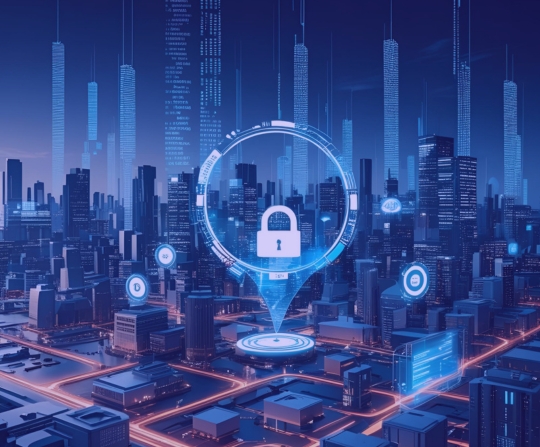Innovation moves fast. Your security model should too.
For CISOs and technology leaders, the challenge has evolved beyond managing increasingly sophisticated threats, it’s enabling the business to move faster without increasing risk. But legacy security architectures weren’t built for today’s environment: AI-powered tools, SaaS sprawl, third-party dependencies, and distributed teams.
Traditional perimeter-based approaches often create friction, slow strategic initiatives, and block high-stakes work. And as shadow IT grows — from unmanaged devices to unsanctioned apps — those legacy controls either leave you exposed or grind the business to a halt.
That’s why a new model has emerged: Zero Trust Isolated Environments. These fully contained, high-trust workspaces give enterprises and government agencies the ability to operate at speed — securely — no matter where work happens or what tools are in play.
Legacy Security Is Slowing Innovation
What began as device sprawl has evolved into a full-blown obstacle to innovation. Shadow IT didn’t appear out of nowhere — it emerged because security architectures failed to keep pace with business needs:
- Employees brought personal laptops into sensitive workflows.
- Contractors and vendors connected with unmanaged endpoints.
- BYOD became the default for mobile and hybrid work.
By 2020, many organizations had already lost clear visibility into what devices were accessing corporate resources and where critical data lived. In response, security teams hardened the perimeter — but those roadblocks slowed M&A integration, delayed third-party onboarding, and made it harder for distributed teams to collaborate at speed.
Then came SaaS.
Business units began adopting platforms independently, creating massive visibility gaps. Today’s reality: 110–130 SaaS apps per company (Better Cloud); 200–300 in large enterprises with IT managing only 26% of spend (Zylo). Meanwhile, 90% of SaaS tools remain completely unmanaged—a 40% increase in just two years. (Grip Security)
The problem wasn’t just access — it was fragmented identity, data sprawl, misconfigurations, and uncontrolled SaaS-to-SaaS flows. Locking things down even further only slowed digital transformation efforts. Just as organizations were grappling with SaaS chaos, a new challenge emerged.
Then came AI.
In just 24 months:
- 91% of AI tools used in enterprises are unsanctioned (Grip Security)
- Employees integrate AI chatbots, code copilots, and language models into workflows
- AI tools request elevated data access, often outside security review
With the rise of GenAI, data exposure risks are now entangled with innovation pipelines. Unchecked, these AI-driven tools can accelerate intellectual property leakage, regulatory violations, and supply chain risk.
The Real-World Cost of Lagging Security Models
This convergence of SaaS, AI, and device risk has become a top driver of modern breaches:
- 82% of breaches involve cloud-based assets (IBM)
- 58% of companies reported SaaS-related security incidents last year (Zylo)
- Credential theft drives 88% of SaaS/web app breaches (SpyCloud, Verizon DBIR)
- Third-party breaches doubled, now in 30% of incidents (Verizon DBIR)
- Unauthorized AI tools and agents have become a high-risk vector: 98% of organizations use unsanctioned AI, 23% of AI agents have leaked credentials, and AI-related incidents jumped 56% in 2024 (Stanford AI Index, Darktrace, Grip Security)
But the bigger issue? Security slowdowns that impact business outcomes:
- Development teams are slowed by constrained environments — safe testing of new tools, including GenAI and emerging technologies, requires isolation to remove risk and limitations
- M&A deal velocity stalls without secure, isolated environments that support the full lifecycle — from covert market research and target evaluation to due diligence, to technology testing
- Security teams struggle to respond quickly to threats when analysts and researchers are delayed in accessing sensitive tools or data needed for rapid investigation and remediation
- Third-party collaboration introduces risk, is hard to scale and slow to launch
Regulators are responding as well. GDPR, CCPA, HIPAA, and FedRAMP are placing increasing scrutiny on cloud governance, data sharing, and third-party risk.
The Shift: From Network-Centric to Work-Centric Security
Legacy security stacks focused on protecting infrastructure. But the modern enterprise operates across dozens of environments, devices, and jurisdictions. The real control point is no longer the network — it’s where the work happens.
Zero Trust Isolated Environments provide that new control plane:
- Fully isolated, browser-based environments for sensitive workflows
- No reliance on endpoint agents or local configurations
- Secure access to SaaS and AI tools without exposing corporate infrastructure
- Real-time audit trails and compliance-ready enforcement
- Deployable across internal teams, contractors, and regulated supply chains
These environments don’t just contain risk — they unlock productivity where legacy models bottleneck it.
Business leaders are using Zero Trust Isolated Environments to accelerate:
- Secure development: testing of AI tools and experimental technologies without risk
- M&A deals: secure data access and technology evaluation for external parties
- Threat investigations: malware analysis and incident response without operational exposure
- Fraud & risk analysis: digital threat monitoring with complete investigator anonymity
- Third-party collaboration: secure data sharing with partners and vendors while maintaining compliance
In each case, these environments replace weeks of IT provisioning, review cycles, or compliance roadblocks with instant-on, fully observable workspaces.
The Takeaway: Security Should Accelerate, Not Obstruct
The new perimeter isn’t your network — it’s wherever your people work. If security slows them down, it slows the business down.
Protection is no longer about locking down the perimeter — it’s about accelerating innovation through isolated environments that enable secure, high-stakes work anywhere.
Ready to see how Zero Trust Isolated Environments can secure your highest-risk operations—without slowing your teams down? Request a custom demo today.


